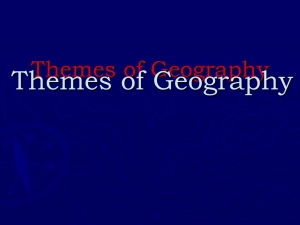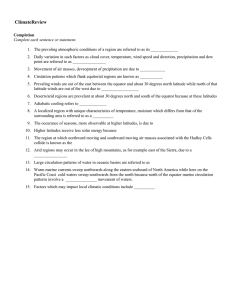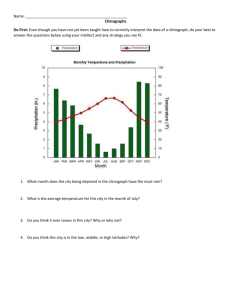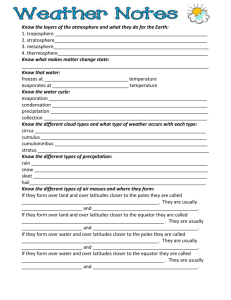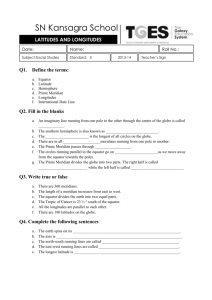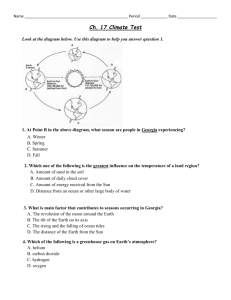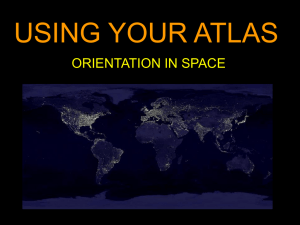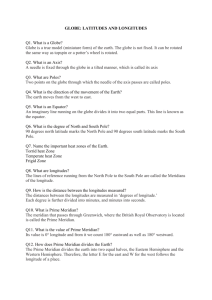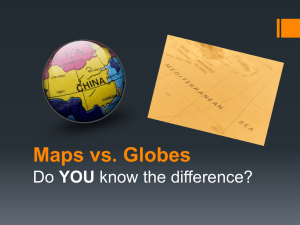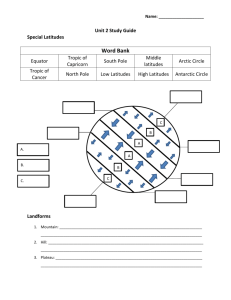Science Chapter 5 test
advertisement
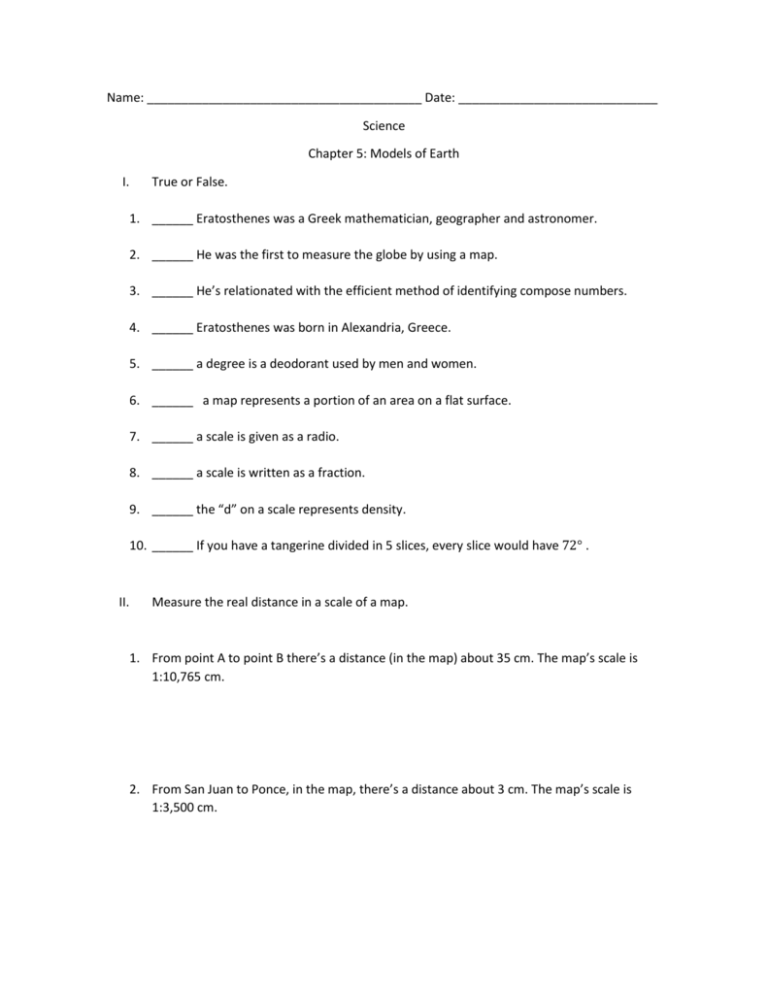
Name: ________________________________________ Date: _____________________________ Science Chapter 5: Models of Earth I. True or False. 1. ______ Eratosthenes was a Greek mathematician, geographer and astronomer. 2. ______ He was the first to measure the globe by using a map. 3. ______ He’s relationated with the efficient method of identifying compose numbers. 4. ______ Eratosthenes was born in Alexandria, Greece. 5. ______ a degree is a deodorant used by men and women. 6. ______ a map represents a portion of an area on a flat surface. 7. ______ a scale is given as a radio. 8. ______ a scale is written as a fraction. 9. ______ the “d” on a scale represents density. 10. ______ If you have a tangerine divided in 5 slices, every slice would have 72° . II. Measure the real distance in a scale of a map. 1. From point A to point B there’s a distance (in the map) about 35 cm. The map’s scale is 1:10,765 cm. 2. From San Juan to Ponce, in the map, there’s a distance about 3 cm. The map’s scale is 1:3,500 cm. III. Choose the correct answer. 1. The summer solstice is: a) When the sun is brighter in summer. b) When the sun is at its northernmost point in the sky. c) When the moon passes and blocks the sun’s rays. d) When the moon stays in the sky, but just for summer. 2. Maps and globes show the… on Earth’s surface. a) shape, size, and position of features b) elevation, reliefs and lands c) U.S.A., P.R., and many other countries d) world 3. A synonym for key is: a) symbol b) degrees c) scale d) legend 4. The ________________ and the ____________________ are 2 base lines used to locate points on Earth’s surface. a) Equator, prime meridian b) Longitudes, latitudes c) Latitudes, meridians d) Horizontal line, vertical line 5. 1: 20,000; when the distance between point B and point C is 16.9 cm. a) 321,800 cm. or 3.218 km. b) 328,000 cm. or 3.28 km. c) 338,000 cm. or 3.38 km. d) 332,800 cm. or 3.328 km. IV. Answer the questions. 1. How latitudes divide the Earth? 2. What limits how large the scale can be? 3. How is the equator like the prime meridian, and how are they different? 4. Is it possible to walk around the world, crossing all 360 degrees of longitude, in less than a minute? If so where? 5. What physical features can be shown on a map? 6. How longitudes divide the Earth globe? 7. What is a map? Do a globe and a map have the same features of an area? Why or why not? 8. What is a scale? 9. How many hemispheres have the Earth? Mention it. 10. What make so special the equator and the prime meridian? What makes the latitudes and the longitudes useful? V. Use the image (in the other paper) to answer the questions. 1. Where is located Washington? 2. Where is California in the map? (N,S,W,E); How many latitudes does it have? 3. Where does the word of Mexico located? 4. Where is Oregon located? 5. Where’s Louisiana located?
